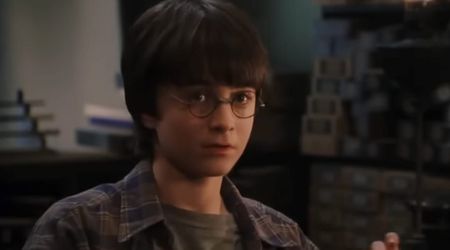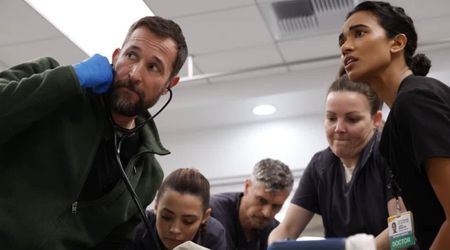'Diagnosis': 7-year-old girl suffers multiple seizures every minute as doctors are baffled by mysterious illness

[Warning: Spoilers ahead]
On the outside, Sadie Hana Gonzalez seems like your run-of-the-mill seven-year-old. She lives with her parents at a beautiful home in Queens, loves singing, playing with her younger sister Ruby, and comes off as a highly-intelligent and intuitive little girl who is perpetually curious about everything around her.
But Sadie has a problem. A problem that has stumped doctors who have been unable to come up with an answer despite running umpteen tests.
Every minute of her life, Sadie suffers focal motor seizures. Sometimes it's in her toes. Sometimes it's in her legs. And sometimes, it's in her mouth, leaving her unable to communicate.
Her story is now the subject of one of the episodes of Netflix's 'Diagnosis,' which is based on a column of the same name written by Yale School of Medicine physician and author Dr. Lisa Sanders that has been published fortnightly in the New York Times since 2002.
The premise of 'Diagnosis' is intriguing, to say the least.
For years, doctors have admonished patients for indulging themselves on WebMD and committing the ultimate sin of self-diagnosing.
Now, there's a growing realization that the power of the internet and the networking it offers has a genuine capability to change lives by connecting those with previously undiagnosable conditions to others who have had similar experiences.

Sadie's parents, Sara and Jose Gonzalez, will no doubt vouch for that.
To hear them say it, their daughter's condition was one that seemed to have inflicted her out of nowhere.
For the first few years of her life, they said, Sadie was just like everybody else and one of the most bubbly and energetic girls around.
But that all changed when they went for a Christmas holiday when she was six-years-old.
When they came back home from their holiday, Sadie collapsed.
They recognized she was suffering a seizure and rushed her to the hospital.
Doctors advised them that they could not discharge her until they were confident she had stopped suffering from seizures.
She would be at the hospital for the next two weeks, suffering multiple seizures every minute, much to the bafflement of medical professionals.
They did not know what was wrong with her.
Traditional treatments proved not only ineffective but also detrimental.
They transformed a once healthy young girl into one with constant mood swings.
In the following weeks, Sadie's parents got a diagnosis: Rasmussen's encephalitis, a terrifying brain disease where a type of white blood cells—T Lymphocytes—invade half the brain and slowly eat away at it, causing it to shrink and deteriorate.
The recommended treatment for the disease, doctors said, was hemispherectomy, a procedure that would not look out of place in the medieval times.
It involved surgeons removing the entire half of Sadie's brain that was diseased.

While it would mean that Sadie would lose function of half her body, as well as possibly lose memory and the ability to speak, doctors pushed her parents to make a decision, warning that the longer they took, the more their daughter's quality of life would reduce.
Sara and Jose, understandably, wanted to explore all their possible options before taking such a monumental decision that would follow Sadie around for the rest of their life.
It was here that they found out about the incredible, far-reaching influence of the internet.
Sadie's story was published by Sanders during one of her fortnightly columns, and her parents were quickly overwhelmed by a tsunami of people who contacted to tell them that they had gone through a similar ordeal.
And to Sara's and Jose's delight, many insisted that a hemispherectomy would not be necessary, as it was still very much possible that what Sadie had was not Rasmussen's.
They suggested a raft of other options they could explore before they decided on what course to take with the seven-year-old.
Indeed, doctors had been inconclusive on their diagnosis.
Spinal taps did show that Sadie suffered from encephalitis, but all the other telltale signs that indicated it was Rasmussen's were missing.
It would be doing the show a disservice to reveal the path they take, but to those whose curiosities have been piqued by Sadie's story and would like to delve into a world of medical mysteries that could put Fox's 'House' to shame, 'Diagnosis' will become a part of Netflix's evergrowing docuseries archive on August 16.
Watch the trailer for the show below.










